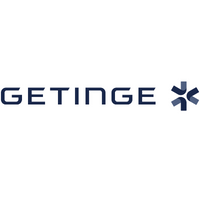On April 29, 2025 The Swedish Institute (SI) presented a new strategy for a stronger image of Sweden abroad. The strategy is the result of a government mandate from April 2024, aimed at strengthening Sweden’s international competitiveness, building trust, and increasing resilience against misleading information about Sweden abroad.
The Strategy Has Been Developed Through an Extensive Process
The strategy has been developed through an extensive process involving a large number of representatives from business, academia, government agencies, regions, and industry and interest organizations. Over 300 stakeholders have contributed input on how the strategy should best be designed. Their collective experience, knowledge, and insights form the basis of the strategy, together with research and reference materials such as the World Value Survey, Nation Brand Index, and the Swedish Institute’s own studies on Sweden’s image abroad. The strategy therefore highlights fact-based areas of strength where Sweden performs well internationally.
“In a time of increasing information threats and international challenges, a strong and fact-based image of Sweden is more important than ever. The new strategy is the result of a broad national effort and is intended to provide everyone working internationally with a shared tool for building relationships, increasing trust, and promoting Sweden’s long-term interests,” says Madeleine Sjöstedt, Director-General of the Swedish Institute.
National Council with Broad Representation
In the development of the strategy, a national council comprising 14 members has been appointed. The council includes representatives with expertise in exports, investments, talent attraction, tourism, culture, and societal issues—all areas that are influenced by how Sweden is perceived internationally. The selection was made from the broad network involved in co-creating the strategy, with a particular emphasis on representation from academia and the business community, in accordance with the government mandate. Council members are appointed for a term of two to four years.
An Updated Strategy for Many Stakeholders
Unlike previous communication strategies for Sweden, which were developed by a smaller group of government agencies, this strategy has been shaped through an inclusive process. As a result, it enjoys broad and deep support among those who will be implementing it.
“When so many different stakeholders come together—from business to academia and public authorities, from north to south—a dynamic dialogue emerges in which new perspectives are born. That’s precisely what makes the outcome of this work both grounded in reality and sustainable,” says Maria Fuxborg, Head of Business Policy at the West Sweden Chamber of Commerce.
The strategy is intended for use by a wide range of actors—from Swedish embassies and companies to government agencies and industry organizations. It offers guidance and support for everything from public advocacy and marketing to international cooperation. Its application can be tailored to the organization’s purpose, target audience, and local context—ranging from social media posts and seminars to opinion pieces and business presentations.
A Strategy for a Stronger Image of Sweden Abroad
The strategy for a stronger image of Sweden abroad (attached below) aims to strengthen Sweden’s competitiveness and increase resilience against misleading information about Sweden internationally.
As a complement to the strategy, the Swedish Institute today also publishes a report titled Brand Sweden 2025, which shows how Sweden performs in international comparisons in relation to the strengths highlighted in the new strategy.
For more information and to download the report, press here! (In Swedish)
Photo: Madeleine Sjöstedt, Director-General of the Swedish Institute.
Photo Credits: Swedish Institute
































